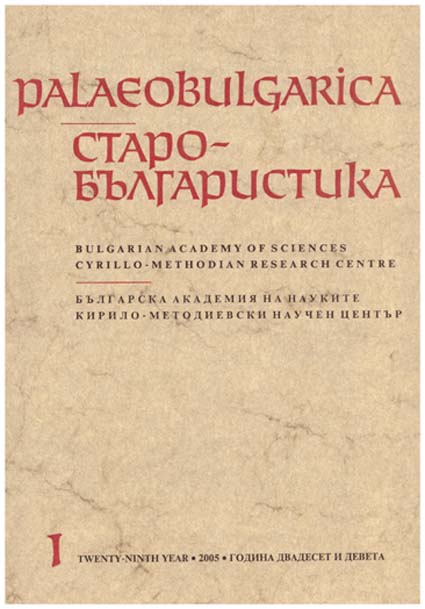The Impact of the Turnovo Hymnographic School on Chant Development in Slavia Orthodoxa: Evstatie’s 1511 Song Book Revisited
The Impact of the Turnovo Hymnographic School on Chant Development in Slavia Orthodoxa: Evstatie’s 1511 Song Book Revisited
Author(s): Gregory MyersSubject(s): Language and Literature Studies, Fine Arts / Performing Arts, Music
Published by: Кирило-Методиевски научен център при Българска академия на науките
Summary/Abstract: While providing a modicum of musical interest, there is no immediate explanation for the appearance of short passages interpolated in the old asmatic style or why they occur in the positions in which they do. One may ponder whether the prominence of such passages does indeed attest to the continuing endurance of the older style, to a continuing awareness of the earlier traditions and even suggests that there was no clear or complete stylistic break with the past. As an additional point, their presence could also offer some hints about their style of musical execution, and raise questions as to whether the whole number was performed by a chorus of psaltai or predominantly by a soloist with choral interjections. Such applications also serve to underscore the versatility of the composers themselves, such as Evstatie, who could demonstrate their acquaintance with the older style, and who probably regarded it as yet another compositional device, which could be employed as necessary. The chants found in Evstatie's Song Book are by no means unique examples. With its profusion of chants with bearing older characteristics this source provides us with an ample body of chant in which these choral insertions occur along with their notational cognates to more effectively establish beyond a reasonable doubt the continuation of a much older tradition from a venerable place of origin. It is thus from the parallel perspectives of musical paleography and musical style, at least in part, that the tradition exemplified by these chants can not only be traced back to the scriptoria of the fourteenth-century Bulgarian capital, Veliko Turnovo, where both liturgical and musical traditions were melded, but perhaps to an even more distant time and place to what took root in Kievan Rus' and flourished more than two centuries earlier.
Journal: PALAEOBULGARICA / СТАРОБЪЛГАРИСТИКА
- Issue Year: 2005
- Issue No: 1
- Page Range: 3-24
- Page Count: 22
- Language: English
- Content File-PDF

